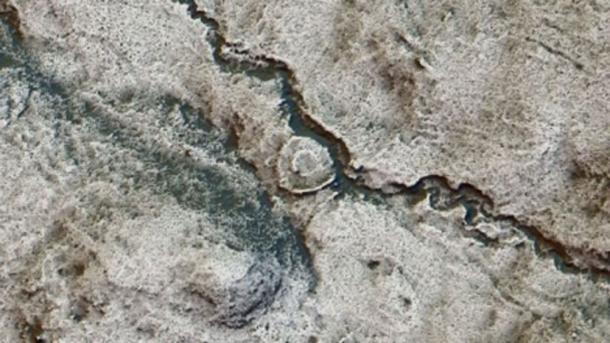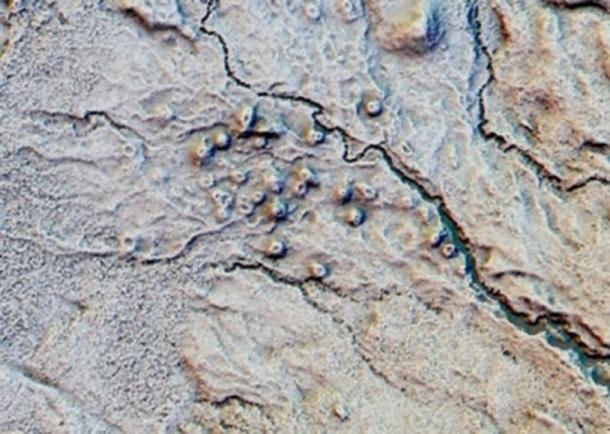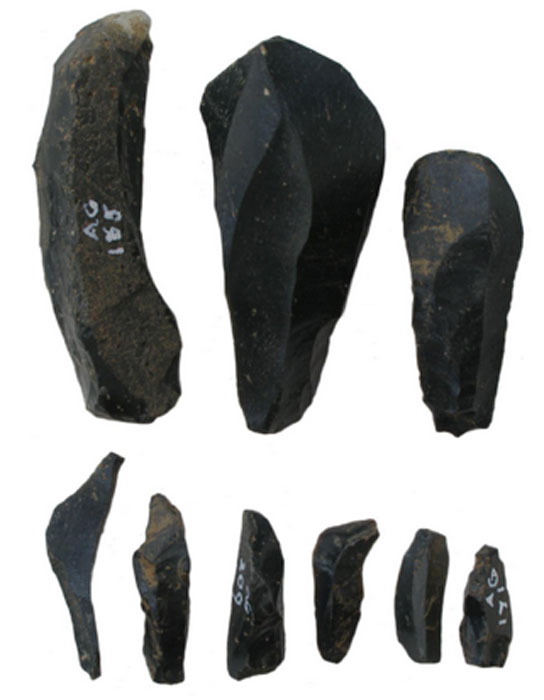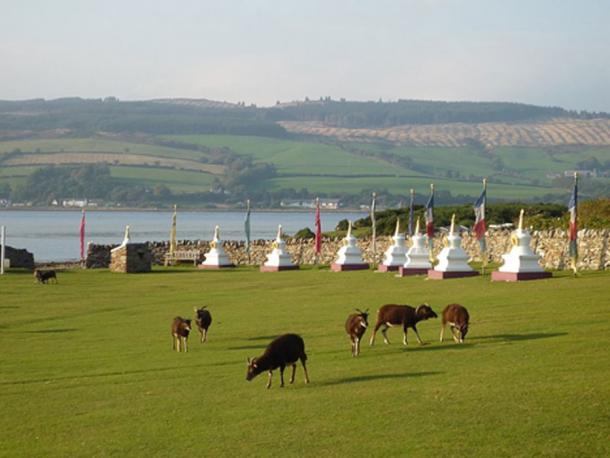1000 Ancient Sites Revealed by Aerial Scan of Scotland’s Arran Island
Archaeologists in Scotland have concluded a cutting-edge archaeological project which has revealed around 1,000 previously unknown archaeological sites on the Isle of Arran.
There is an island off the coast of Scotland which contains some of northern Europe’s most spectacular standing stones, megalithic tombs, and ruins of ancient farming communities going back around 6,000 years.
I am not talking about Orkney or Shetland but another magical island only a short ferry crossing from Glasgow on Scotland’s west coast, which according to an Island Review article is more famous for its moors and mountains, arts and crafts, beer and whisky, than for its glorious prehistoric archaeology.
I am of course are speaking about the Isle of Arran in the Firth of Clyde where archaeologists from Historic Environment Scotland (HES) recently flew airborne laser scanning (lidar) devices over the land surface to generate a 3D image of prehistoric settlements, medieval farmsteads, and even a Neolithic monument, which the BBC called an “exceptionally rare find.”

LIDAR and the Rise Of “Rapid” Archaeology
The lidar data is available from the Scottish Government Remote Sensing Portal and the survey results are available to view on Canmore – Scotland’s National Record of the Historic Environment. It was the largest survey of its type that has ever been conducted.
Dave Cowley, Rapid Archaeological Mapping Manager at Historic Environment Scotland ( HES) said it has shown scientists that there are “double” the number of ancient monuments on the Isle of Arran than they had previously known about and Scottish heritage leaders say “tens of thousands” of further sites might be found using the scanning technology.
Cowley also told reporters that the new 3D technology allowed for a “rapid” archaeological survey conducted over weeks rather than months or years, and it also allowed the discovery of sites that might even have been impossible to find.
Among the structures identified from the air are medieval and post-medieval shielings (circular stone structures which sheltered sheep from winds), which detail how upland areas were used by shepherds.

Furthermore, archaeologists identified a magnificent medieval roundhouse – a type of circular wooden home with a conical roof that was built in Britain from the Bronze Age throughout the Iron Age and into the medieval period .
Mesolithic Pitchstone Traders
The Isle of Arran is the largest island in the Firth of Clyde and the seventh largest Scottish island . It is often referred to as a “geologist’s paradise,” and as far back as the Neolithic, and the Early Bronze Age, pitchstone from the Isle of Arran were transported around Britain.
According to a study published on Researchgate, worked Arran pitchstone from radiocarbon-dated pits indicate that on the Scottish mainland all archaeological pitchstone derives from outcrops on the Isle of Arran.
And on the island, pitchstone-bearing assemblages include diagnostic types from the Mesolithic that was traded extensively throughout Britain during the Early Neolithic period.

The Isle of Arran – An Ancient Spiritual Center
On Arran, archaeologists find a type of burial structure classified as a ‘Neolithic Clyde Cairn’ which are stone and earth mounds that enclose a chamber lined with larger stone slabs. They are thought to have been used for public community rituals.
Several Bronze Age sites have been excavated and the monastery of Aileach was founded by St. Brendan in the 6th century with the nearby Holy Isle being a center of his spiritual activities. Holy Isle has a long history as a sacred site of pilgrimage with its healing holy well , 6th century monk St Molaise’s hermit cave, and a 13th-century monastery.

Lidar technology is quickly building a new picture of Scotland’s historic environment and the new study on Arran is another step as the aerial scanning technology becomes more widely available.
And if the scientists’ speculations are right, and “ tens of thousands more ancient sites ” are discovered across the rest of Scotland, a whole new generation of archaeology, and archaeologists, will be attracted to the Highlands of Scotland.
